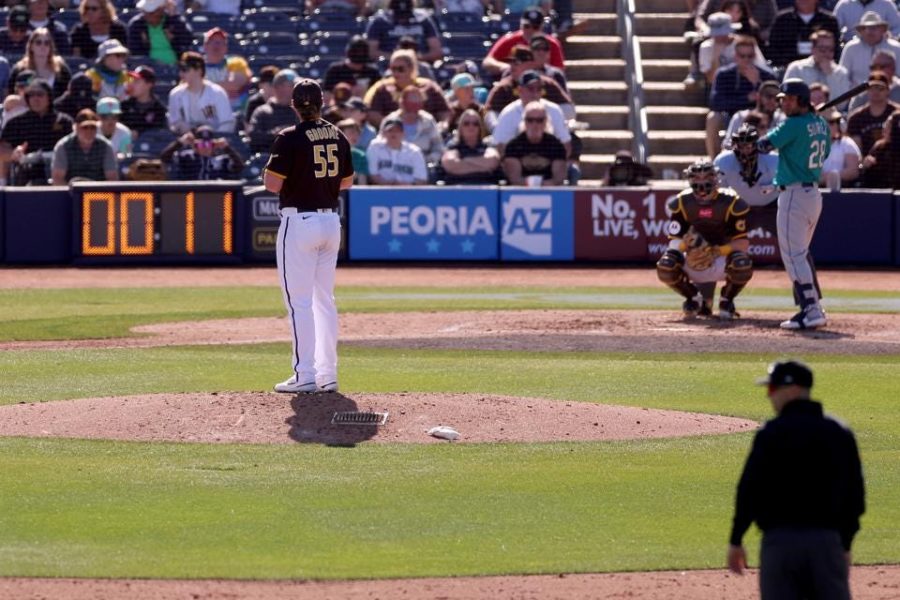Let’s rush, rush, rush through the ballgame
Ah, baseball. America’s Pastime. The heralded game where you sit in stadium seats, cheer on your favorite team, chomp on a ballpark hot dog and the classic Cracker Jacks, and maybe chug a beer or two (if you’re of age, of course).
For the players, it’s a chance to showcase their brains as they try to get into the minds of their opponents, whether they are up to bat or on the mound.
Players also aim to show off their elite athleticism, no matter if they are throwing 100+ foot bullets from right field, spinning pitches that turnstile any hitter, or mashing a baseball so hard and so far it makes the most beautiful sound known to man (you know what I’m talking about).
Anyhow, the best way to experience a great time in North America, year after year, is chill, exciting, and usually never lacking a sing-along.
“Year after year,” according to the new rules set in Major League Baseball, has ended.
What do I mean? Well, two new rules have changed the landscape of MLB experience.
First off, a “pitch clock” has been introduced. Per Baseball Reference, the pitcher on the mound has a 30-second window between each batter. The notable aspects packed in this new regulation include a 15-second timer between pitches without a baserunner, and 20 seconds with a baserunner.
“Between pitches” is a little misleading. If the pitcher does not begin his MOTION before the timer hits zero, that pitcher is charged with an automatic ball.
As for batters, they, too, can get penalized. According to USA Today, if the hitter is not in the box and ready for the pitch when the clock strikes eight seconds, the batter is charged with an automatic strike.
This revelation has already occurred (in a big way), as spring training charges through its second week.
Leave it to “Close Call Sports” to describe the moment (with a recap of it below):
On February 25, Red Sox batter Cal Conley was set to face a 3-2 pitch with two outs and the bases full in a 6-6 game in the bottom of the ninth.
Braves pitcher Robert Kwiatkowski was prepared to throw that full-counter, but Conley was not prepared with eight seconds left on the clock, though he was in the batter’s box.
Home-plate umpire John Libka noticed this and enforced an automatic strike on Conley, which ended the game.
All of this craziness created a pretty hilarious call from the broadcast crew doing the game on TV as well as reaction around the sports world (and even from Conley himself, as he took the time after being called out on that auto-strike to laugh at what just transpired).
From my lens, this call by the ump at the end of a spring training game is OK.
Work out the kinks of the new rules and see if they are sustainable for real-stakes play.
(Because, if you ask me, I would much rather go back to enjoying every second of Cubs baseball, either on Marquee or on 670 The Score with the legendary Pat Hughes and Ron Coomer, if we do not have a strong reason to add new, quicker action.)
Anyway, once you reach a verdict on how the new rules affect current games and how they could affect future “big” games, then go with it.
If you know of the saying “speed kills,” often echoed in the popular TV series American Ninja Warrior, going too quick can hurt.
If you are Major League Baseball, take your time, see what happens in spring training, and, most importantly, don’t get lost in the speed.

